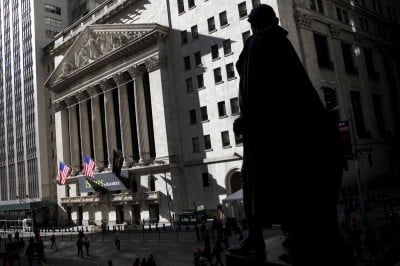A target-date fund is a hand-off investment approach designed to maximize returns for investors by a predetermined date. These funds make profits in the early years by concentrating on riskier growth equities, and then they try to hold onto those profits as the target date gets closer by leaning towards safer choices.
Target-date mutual funds, also known as life-cycle funds, are frequently chosen by investors who are saving for their retirement, but they are also used by those who are preparing for a large, impending bill, such as their child's education costs.
Many employer-sponsored retirement plans (a 401(k) plan) frequently choose target date funds as an employee's primary investment strategy for their future.
How Does a Target Date Fund Work?

Target date funds use a conventional portfolio management approach to the targeted asset allocation over the fund's period to achieve the investment return objectives. Target-date funds are exceptionally long-term investments because they are named after the year the investor intends to use the assets. For instance, Vanguard introduced its Target Retirement 2065 products (one of the best target date funds) in July 2017. The Vanguard target date funds have a 48-year time horizon because their target date of utilization is 2065.
The portfolio managers of a target date fund design their investment strategy using this predetermined time horizon, which is often based on conventional asset allocation methods.
The fund managers also use the target date to calculate the risk level the fund is ready to take on. Target-date portfolio managers often change the risk levels of their investment portfolios once a year.
The majority of target fund advertising material displays the asset shift or allocation glide path throughout the investment time horizon. The glide rate of the funds is set up to achieve the most cautious allocation on the designated target date.
Target Date Fund Examples
Vanguard, an investment manager, has a broad selection of target-date funds, such as the Vanguard Target Retirement 2065 fund (VLXVX) and the Vanguard 2025 fund (VTTVX).
The Vanguard 2065 Fund (VLXVX) expense ratio is 0.15%. As of the third quarter of 2022, 90.5% of the portfolio was made up of equities and 9.5% of bonds. To meet its objectives, the fund holds more Vanguard mutual funds.
Its holdings included
- Vanguard Total Bond Market II Index Fund (6.7%)
- Vanguard Total International Bond Index Fund (2.9%)
- Vanguard Total International Stock Index Fund (36.6%)
- Vanguard Total Stock Market Index (53.8%)
The expense ratio for the Vanguard 2025 (VTTVX) fund is 0.08%. The VTTVX fund is more conservative than the VLXVX fund since it matures 20 years earlier. As of Quarter 2 2022, the fund portfolio has a stock weighting of 57.5% and a bond weighting of 42.5%.
Its holdings included,
- Vanguard Total Stock Market Index Fund (34.7%)
- Vanguard Total Bond Market II Index Fund (27.6%)
- Vanguard Total International Stock Index Fund (22.7%)
- Vanguard Total International Bond Index Fund (12.2%)
Both Vanguard funds invest in the same assets. The 2065 Fund, on the other hand, has a somewhat smaller proportion of cash equivalents and bonds and is more weighted heavily toward stocks. The 2025 Fund is less volatile. It is more likely to hold the assets the investor needs to start withdrawing in 2025 since it has fewer stocks and a higher weight in fixed income.
Pros and Cons of Target Date Funds

Pros
Many people who invest in 401(k) plans choose target-date funds. Investors select only one target-date fund to fit their time horizon rather than selecting numerous funds to build an investment portfolio that would help them meet their retirement goals.
For instance, a younger worker who wishes to retire in 2065 would select a fund with a target date of 2065, whereas a person who is older and wishes to retire in 2025 would select a fund with a target date of 2025.
Target date fund reduces the requirement for additional assets. If you invest in one fund, some financial experts suggest that it must be the only investment fund in your strategy. This "one-and-done" strategy is secure since adding more investments could distort your portfolio's overall allocation. However, once you've chosen a target date fund, you have the ideal investment that you can set and forget.
Cons
Target-date funds' automatic nature can, of course, work both ways.
The predetermined movement of portfolio assets might not match an investor's fluctuating goals and requirements. The fund's earnings are not guaranteed to increase in line with inflation. There are actually no assurances that the fund will bring in any revenue or earnings at all.
A target-date fund is not an annuity; it is an investment. These funds are vulnerable to risk and underperformance, just like any investments. Target-date funds can sometimes be expensive as investments go. Target-date funds have a management fee and a fund-of-funds (FoF) management fee. Thus your target-date fund portfolio contains several mutual funds, each of which has a different cost ratio.
Should I monitor my Target-Fund?
Yes. Despite the fund's regular rebalancing, it is crucial to keep an eye on its investments over time to ensure they fulfill your needs. Investments with a lengthy horizon are target date funds. However, the investment becomes more conservative as you approach the target or retirement date. A portion of the assets are still invested in stocks, subject to market fluctuations like all other investments, so they do not guarantee that you will have enough retirement income at that time.






